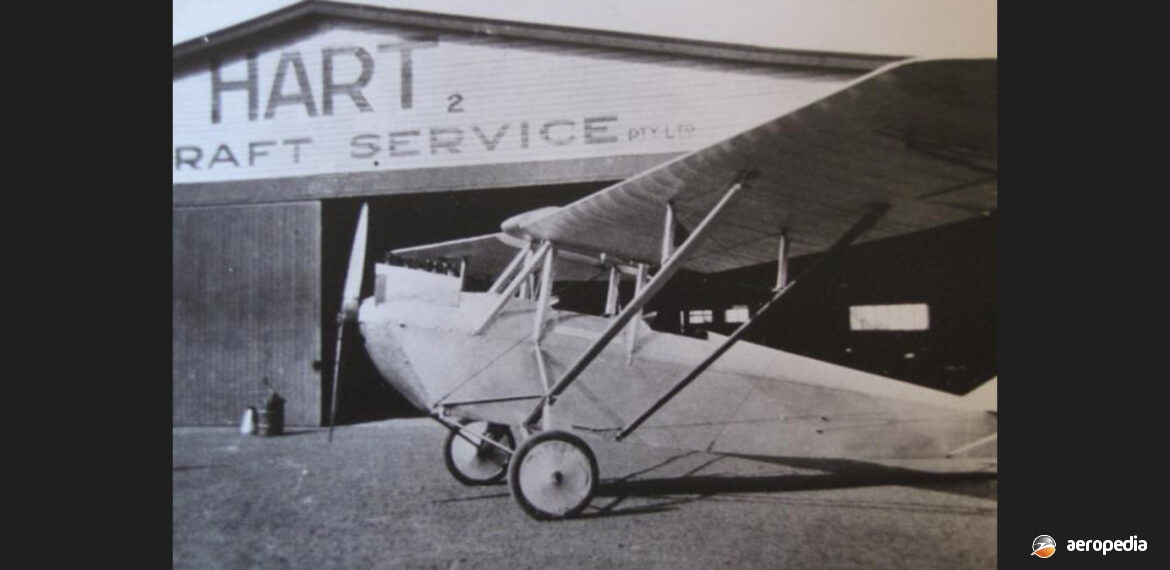Photograph:
The parasol wing aircraft built by David Staig (Staig Family collection)
Country of origin:
Australia
Description:
Two-seat light touring aircraft
Power Plant:
One 48 kw (65 hp) modified ADC Cirrus Mk 1 four-cylinder in-line air-cooled engine
Specifications:
- Wingspan: 12.8 m (42 ft)
- Length: 7.01 m (23 ft)
- Wing area: 19.50 m² (210 sq ft)
- Cruising speed: 104 to 112 km/h (65 to 70 mph)
- Stalling speed: 64 km/h (40 mph)
- Take-off speed: 56 to 64 km/h (35 to 40 mph)
- Take-off run: 128 m (420 ft)
- Landing speed: 56 km/h (35 mph)
- Landing run: 91 m (300 ft)
- Time to 305 m (1,000 ft): 1 min 30 sec
- Empty weight: 406 kg (896 lb)
- Loaded weight: 620 kg (1,366 lb)
History:
In the 1930s David Staig, an automobile engineer from Surrey Hills in Melbourne, VIC obtained a pilot’s licence and decided to build his own aircraft. This was a two-seat parasol wing machine of wooden construction. To power the machine he converted a four-cylinder liquid-cooled motor-car engine which produced 55 kw (74 hp) at 1,700 rpm for his own use by designing new cylinder barrels, heads, and pistons, and converting it to air-cooling. However, during trials the engine overheated and, after a crankcase failure, the development of the engine was abandoned in favour of using a Cirrus Mk I and adapting the barrels and pistons made for the original engine to suit the Cirrus. When completed this engine produced 48 kw (65 hp) and drove a propeller 1.95 m (6 ft 4 in) in diameter.
The fuselage was built along similar lines to the de Havilland DH.60 series, with spruce longerons and formers, covered with ply from the firewall back. Accommodation was for two, in two separate cockpits, and there was provision for dual controls, with a luggage locker behind the rear cockpit with a capacity of 9 kg (20 lb). Fuel was carried in the centre-section in a tank with a capacity of 136 litres (30 Imp gals). The wings could be folded outboard of the centre-section for ease of storage.
In June 1931 the aeroplane was towed to Essendon aerodrome, VIC and rigged, and on the morning of 4 June, following successful taxiing trials, Staig took off and completed three circuits in a ten minute flight. Initial testing revealed it was tail heavy and, following balancing, further flights were achieved. Further development led to the engine being moved forward 15 cm (6 in) and the installation of an extra fuel tank containing 77 litres (17 Imp gals). Other changes were also made.
An application was made on 30 May 1932 for registration but this was not issued pending lodgment of drawings and the supply of data. Some 15 drawings were lodged but they were considered to be inadequate. In August 1933 the aircraft, now named Young Australia, had completed 85 hours flying time, a lot of this occurring in the search for the Avro 10 airliner Southern Cloud which was lost in the Snowy Mountains. In February 1939 it made a heavy landing suffering damage to the undercarriage and lower fuselage. It was repaired and later flown by Messrs Fred Lauer and Bill Dunne but when these men were called up to the RAAF in 1940 they decided not to store the machine and it was burnt. The engine was presented to a fruit grower who used it as an aid in preventing frost damage to his crops.

